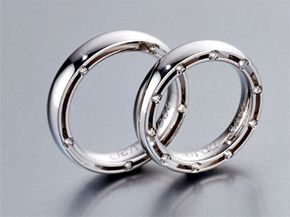Refining Gold
The final stage of gold production -- refining -- involves removing impurities that remain after the smelting process. Refining companies receive doré bars, as well as scrap gold, and reliquefy the metal in a furnace. Workers add borax and soda ash to the molten metal, which separates the pure gold from other precious and less precious metals. A sample is then taken to a lab for tests, or assays, that measure the gold content. In most cases, the gold is 99.9 percent pure. Workers cast the gold produced during refining into bars.
What happens next depends on how the gold will be used. Pure gold is generally too soft for most practical applications, so other metals are nearly always added to it. When gold is combined in this way, it forms an alloy. Scientists and goldsmiths often use colors to designate the various gold alloys that are possible. For example, white gold is made by combining gold with nickel, silver or palladium. Red or pink gold is an alloy of gold and copper. And blue gold is the result of mixing gold with iron.
Advertisement
Karatage refers to how much gold is present in an object versus another alloy. A higher karatage indicates a higher proportion of gold in the sample. So, 24-karat gold is 100 percent gold, while 12-karat gold has exactly half as much. The common karatages are shown in the accompanying sidebar.
Interestingly, different cultures prefer different karatages. For example, the people of India are partial to 22-karat gold, while Europeans prefer 18-karat gold. In the United States, 14-karat gold, which offers a balance between gold content, hardness and affordability, is by far the most popular [source: World Gold Council: Jewelry Inspirations].
Most people are familiar with karatage as it applies to jewelry, and jewelry accounts for nearly two-thirds of the global demand for gold [source: Gerlach]. In the next section, we'll examine the other uses of gold.
